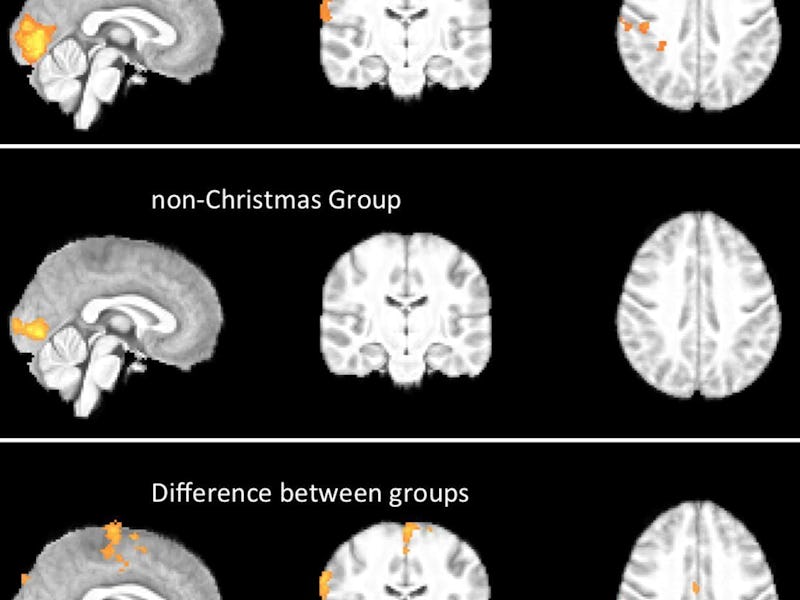fMRI Brain Scan Locates the Spirit of Christmas
Tiny tots with their eyes all aglow are experiencing elevated cerebral blood oxygenation.

Christmas spirit lives in the brain, according to a new article in the BMJ. While revelers usually chalk up feelings of goodwill and merriment to boozy eggnog or well-deserved vacation days, the study, published in the journal’s annual offbeat-science Christmas issue, suggests there’s actually a “Christmas spirit network” in the human brain.
The researchers behind the study, from Copenhagen University, had one objective: “To detect and localise the Christmas spirit in the human brain.” They were convinced the yuletide spirit had a cerebral hideout — it was just a matter of finding it.
To figure out where, the researchers used a technique called fMRI, which measures the amount of oxygen blood carries to different regions of the brain, which indicates activity. Twenty Danish participants, split evenly between die-hard Christmas fans and neighbors that didn’t celebrate the holiday, were put into the fMRI scanner and shown a series of holiday-related images, interspersed with neutral images. They’re careful to note that “No eggnog or gingerbread was consumed before the scans.”
Participants were shown a series of Christmas-themed images interspersed with less festive ones.
Compiling the results of the scans, the team found five parts of the brain that were more active in people who celebrate Christmas. These areas, the authors write, are associated with spirituality, somatic senses, and the ability to recognize facial emotions. “Collectively,” they write, “these cortical areas possibly constitute the neuronal correlate of the Christmas spirit in the human brain.”
The authors, obviously feeling pretty jolly themselves, call out their Krampus-esque colleagues, who dismiss fMRI as an effective tool for understanding emotions as victims of “bah hambug syndrome.” “Naturally,” they write, “in keeping with the good spirit of the holiday, we disagree with these negative perspectives.”
Though Christmas-themed and mildly silly, the study’s results — which really are an investigation of the crashing together of joy, festivity, and nostalgia — could shed light on the neurological basis for celebrations of both the religious and secular variety.